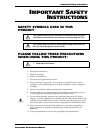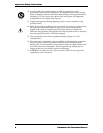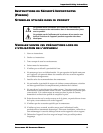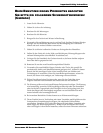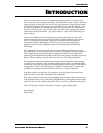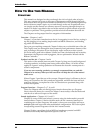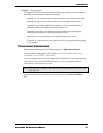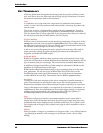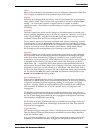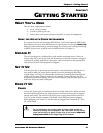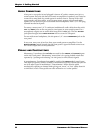
Introduction
ANDROMEDA A6 REFERENCE MANUAL 15
INTRODUCTION
There was a time when most of us thought that analog synthesis was dead. Yeah,
there were a few new analog instruments – and rather decent ones, at that – that have
come and gone over the past few years. They were glimmers of hope that the robust,
full and rich sounds of the analogs could peacefully co-exist with the digitals. I was
excited that a handful of manufacturers were still “carrying the ball” and believed
that there will always be a place in the music world for a great analog synth. But for
some reason, these instruments – as good as they are – seem to be a little lacking in
many respects.
Then I was introduced to the Andromeda A6. Simply stated, this box has more
features and music power per square inch than any other synthesizer I’ve owned.
And I’ve owned a bunch of them, starting with an obscure little monophonic
instrument called the MiniMoog
®
in 1973. To me, the A6 represents the next
significant step in the development of musical instruments that celebrate this
technology.
The Andromeda A6 starts out with 16 of the most elaborate synthesizer voices to
date, and these voices sound absolutely wonderful. The attention to detail applied as
Alesis Engineering researched the great analog synths of the past has paid off in
producing an instrument that has the world-class analog sound, complete with every
nuance. There’s nothing “virtual” about the A6: it is a real analog synthesizer.
This synthesizer has more modulation and control functionality than most players
can fully use in a lifetime. It has an studio-quality effects system, an elaborate MIDI
system and one of the most logical and useful displays on the market. Add to that an
Arpeggiator, a classic 16-event Sequencer, a Ribbon controller and CV inputs, and
you have an analog powerhouse with all of the tools — and all of the toys.
Last, but certainly not least, the A6 is gorgeous. And its striking layout and front
panel artwork is every bit as functional as it is beautiful.
We’ve just touched on the some of the highlights of this product; there’s much more
to be explored. After you’ve read through this Reference, and experienced the sound
and feel of the A6, I’m confident that you will be every bit as excited about it as I am.
There will always be a place in the music world for a great analog synth.
Dave Bertovic
Winter 2001



